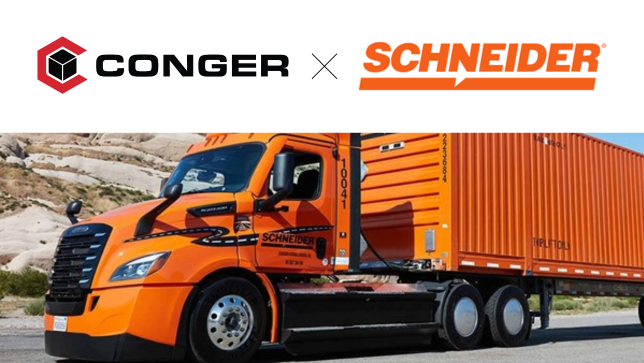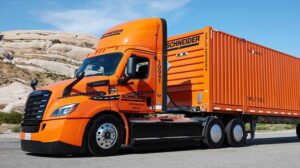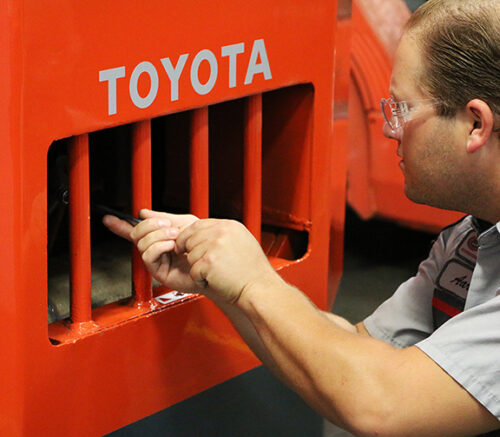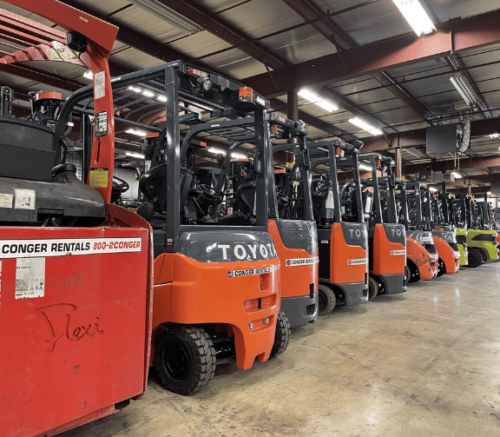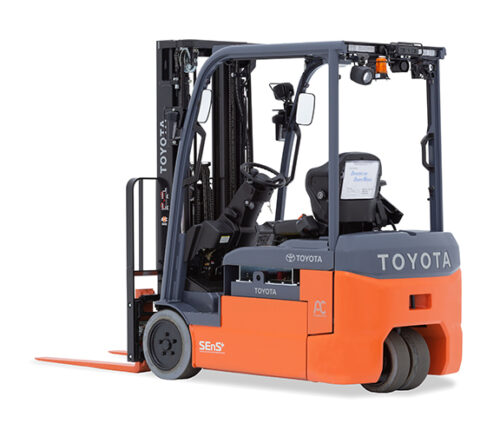From its humble beginnings in 1935 with just one truck in Green Bay, WI, Schneider National has evolved into a thriving global enterprise. With over 15,000 employees and an annual operating revenue of $5.5 billion, Schneider National has cemented itself as a prominent player in the industry.
Known for its high-visibility Omaha Orange fleets and continued commitment to sustainable freight shipping solutions, Schneider National is the gold standard for transportation and logistics companies.
CASE STUDY HIGHLIGHTS
CHALLENGES
As Schneider’s forklift fleet grew, so did their desire to optimize its efficiency. However, achieving this required a deep dive into their fleet’s spending, size, and maintenance.
To aid in these efforts, Schneider National sought the help of Conger Industries in three main areas:
Reining in Forklift Fleet Cost
Schnieder was struggling to grasp the full scope of its fleet costs, and to make matters worse, tracking expenses was becoming increasingly difficult. Fleet invoices were arriving through multiple channels, making proper routing, and processing a challenge. Also, without standard coding practices and accuracy checks, it was hard to reduce errors.
Right Sizing the Forklift Fleet
Schneider also faced uncertainty regarding the fleet’s ownership status. For some fleet equipment, it was unclear whether they were owned, rented, or leased. This uncertainty made it difficult to identify issues such as expired equipment leases. Some forklifts had leases that had matured two or more years ago.
The Conger/Schneider team also identified many long-term forklift rentals that lacked significant discount opportunities, which further drained fleet resources.
Additionally, the team identified inoperable equipment. Some lift trucks were too damaged to function, while others were retired due to age. They also lacked a proper disposal process, resulting in valuable facility space occupied by unusable equipment.
Standardizing Forklift Maintenance
Schneider had pressing maintenance issues as their aging fleet costs them more money to maintain than to replace.
To make matters worse, Schneider lacked a streamlined process for quoting and approving the recommended repairs identified during routine maintenance. Schneider was also paying standard maintenance rates. Paying these standards meant they were not taking advantage of discounts that service companies offer for labor, materials, and travel.
SOLUTIONS
Centralize Invoice Routing
The first step to optimizing Schneider’s forklift fleet involved sending all invoices directly to Conger. Once received, Conger would audit and code the invoices into a standardized format. After verifying their accuracy, Conger could consolidate the invoices into a single document.
This process would allow Conger to send a single bi-monthly invoice to their designated contact at Schneider, making their invoices much easier to manage.
Enable Instant, 24/7 Access to Critical Documents
For convenience, Conger would also post the invoices to an online dashboard and provide Schneider access. This dashboard would enable fleet managers swift access to essential fleet documents with the ability to access them from anywhere.
Collect Accurate Equipment Information
The next task was accurately tracking equipment counts. This process required the Schneider/Conger team to survey all Schneider sites and gather essential equipment information, such as hour meter readings.
However, a one-time collection of this data would not be sufficient since equipment usage changes over time.
The team would designate a contact at each site responsible for collecting, auditing, and verifying monthly readings of their equipment. This approach would help maintain up-to-date data for decision-making.
Fine-Tune Intervals According to Usage
With the newly collected data, Conger could analyze equipment hour meter readings and gauge the usage of each lift truck. Recognizing that increased usage requires more frequent maintenance, these metrics would assist in refining maintenance schedules.
(In numerous instances, this resulted in adjusting intervals to 250 hours for liquefied petroleum gas (LPG) trucks and 500 hours for electric lift trucks.)
Tracking Maturity Dates
The new data would also allow Schneider and Conger to track maturity dates and set replacement schedules accordingly. This process would help safeguard against overused equipment. In turn, this would help protect against costly overtime penalties, higher maintenance costs, and liability for damage. Monitoring maturity dates also aids in the planning of acquiring new equipment to minimize downtime during replacement periods.
Streamline Work Order Processing
Finally, the Schneider/Conger team would need a method to prevent routine maintenance issues from slipping through the cracks. The team would resolve this issue by sending all maintenance reports to Conger. Subsequently, Conger could request repair quotes and authorize work orders within a specified spending limit. Once approved, Conger would coordinate the repairs with the nearest forklift dealer.
IMPLEMENTATION
Consolidate Equipment Inventory
After collecting Schneider’s forklift equipment utilization records, it was time to determine the appropriate action for each lift truck. This process began by assessing each site and identifying leaseholders and the remaining lease duration for each forklift.
Subsequently, the Schneider/Conger team focused on returning underutilized rentals and those unsuited for their intended purposes. Through the collaboration with local vendors, Schneider returned, sold, and in some cases, scraped equipment they no longer needed.
To further reduce costs, the team prioritized purchasing currently rented equipment instead of continuing to pay monthly rental fees. When feasible, they acquired the equipment at fair market value. In cases where purchasing was not an option, Conger worked with vendors to procure new or used forklifts for Schneider.
Cementing the Process
After Schnieder resized the forklift fleet, they needed a formal maintenance process. As a result, Schneider designated contacts who would be responsible for approving repairs, rentals, or equipment acquisitions.
They also introduced purchase order requirements for acquiring rentals. This requirement served to control spending measures and act as a final check, ensuring that only authorized personnel could acquire equipment.
Standardizing Maintenance Intervals
The forklift equipment records enabled Conger and Schneider to establish standardized maintenance intervals by providing the necessary insights. Conger could now arrange preventative maintenance (PM) agreements with local forklift dealers. Initially, each forklift would undergo servicing at least once per year.
These new agreements also allowed Conger to negotiate discounts on labor rates with vendors, resulting in additional savings for Schneider.
RESULTS
The partnership between Schneider National and Conger proved to be immensely successful. Through close collaboration, the team has been able to achieve impressive results, including:
- Cutting total material handling forklift fleet spending by 30%.
- Achieving a 40% reduction in forklift maintenance costs.
- Slashing rental spending by 98%.
- Lowering yearly lease spending by 25%.
- Reducing yearly damage fees by 32%.
- Downsizing overall forklift fleet count by 31%.
Moving forward, Schneider is well-equipped with the support to continue thriving as a leader in the global logistics market. They can also count on Conger to help them navigate fleet challenges as they arise.
